Metallic Pin Box
(formerly known as the Dome Top Box)
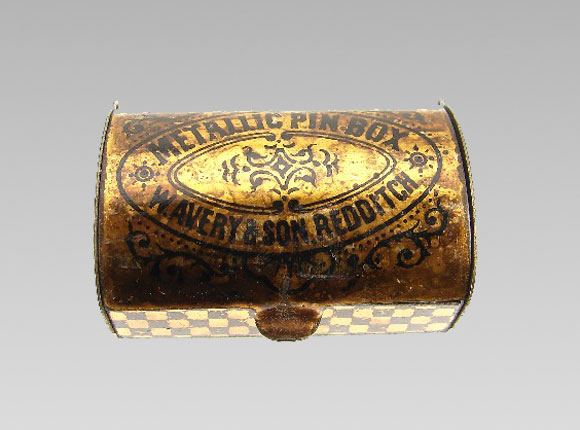
Needle Case (photograph courtesy of Bunny's Place)
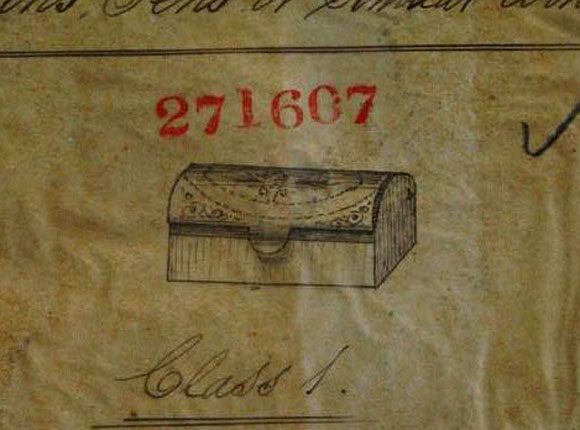
Design Representation
Design Details
Needle Case Type: |
Figural |
Patent/Registered to: |
W. Avery & Son - Redditch |
Patent/Design Representation #: |
Ornamental Class1: Metal: #271607 |
Patent/Design Registration Date: |
March 28, 1873
|
Location of Patent/Design Registration: |
The National Archives (TNA) - Kew, UK |
Reference #: |
TNA Representation - BT 43/34/271607
TNA Register - BT 44/3/271607 |
Dimensions: |
3.5 x 2.3 x 1.5 |
Material: |
Tin |
Name Variations: |
W. Avery & Son - Redditch |
Other Variations: |
a) With checkerboard pattern
b) Plain without checkerboard pattern |
Additional Photographs
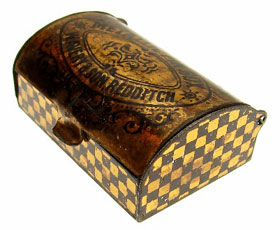
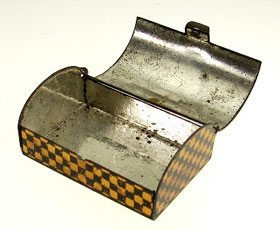
Side and with top open with checkerboard pattern (photos courtesy of Bunny's Place)
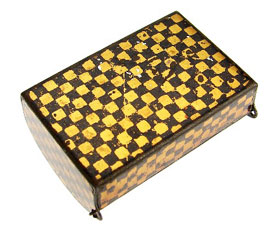
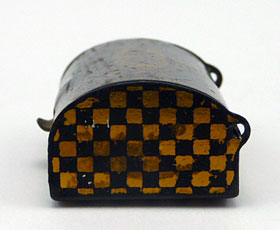
Bottom and side views with checkerboard pattern (photo courtesy of Bunny's Place and Lynda Herrod)
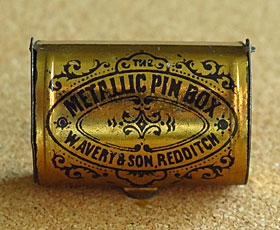
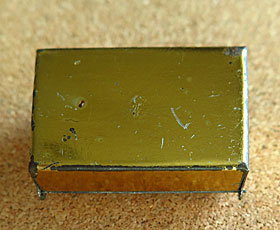
Views of item plain without checkerboard pattern
Facts
A pin is a thin metal wire with a point at one end and a head of metal, glass or plastic at the other, used to hold together cloth or
paper. Before the industrial revolution and mass production they were relatively expensive so were carefully stored in a variety of ways
including pin cushions, pin wheels, pin poppets and pin boxes. A lady did not only require a good store of pins for her dressing table but
would also carry a small supply for emergencies. As a reflection of the pin’s worth some pin boxes were made of expensive materials.
Silver pin boxes were used as long ago as the late 14th century.
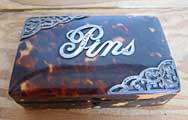
History
The earliest pins were made from bones from fish or animals or thorns. These were skewer like having no heads and were used to fasten
clothing. Over the centuries pins were fashioned from wood, bronze, iron and brass. In pre-18th century England metal pins were
relatively rare and therefore expensive. They were considered important enough to be listed in inventories of household good in the 13th
century. Although there was a Company of Pinmakers established in London in 1356, and monasteries are also thought to have played a role in
pin production, France was the main source. Henry the VIII, perhaps partly because of his dissolution of the monasteries, encouraged the
establishment of the pin industry with Parliamentary Acts stipulating quality standards and that they could only be sold on the 1st and 2nd of
January each year, making them popular New Year’s gifts. Iron pins were made in Bristol but in 1726 Gloucester became the centre of the pin
trade and superior brass pins were able to be made with brass wire produced in Birmingham. Pin making was a very labour intensive industry
involving 18 distinct tasks. The Scottish economist Adam Smith used the pin industry as an exemplar of how the division of labour could improve
productivity. By 1830 the industry was fully mechanised and by mid-century so many pins were being produced and they were so inexpensive that
the term “not worth a pin” entered the vernacular.
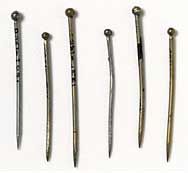
Miscellaneous
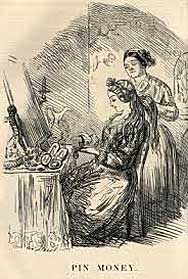
The term pin money which today means a paltry sum set aside for the purchasing of non-essentials has altered from its original circa 16th century
meaning of the money allowance that a husband was expected to provide to his wife for her personal use for clothing and other requirements.
There are a few possible sources for this term, one being that ladies could only buy their much needed but relatively expensive pins on the first
two days of the year with their pin money. Another relates to the practice of adding a small sum when settling an account for the merchant’s
wife “for her pynns”. In 1849 Punch published two cartoons comparing the lot of privileged upper class recipients of pin money with that of
the impoverished needlewomen who earned less than was needed to subsist.
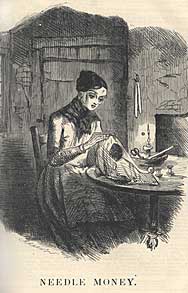
Note: Right side panel text and photos provided by Lynda Herrod.
















